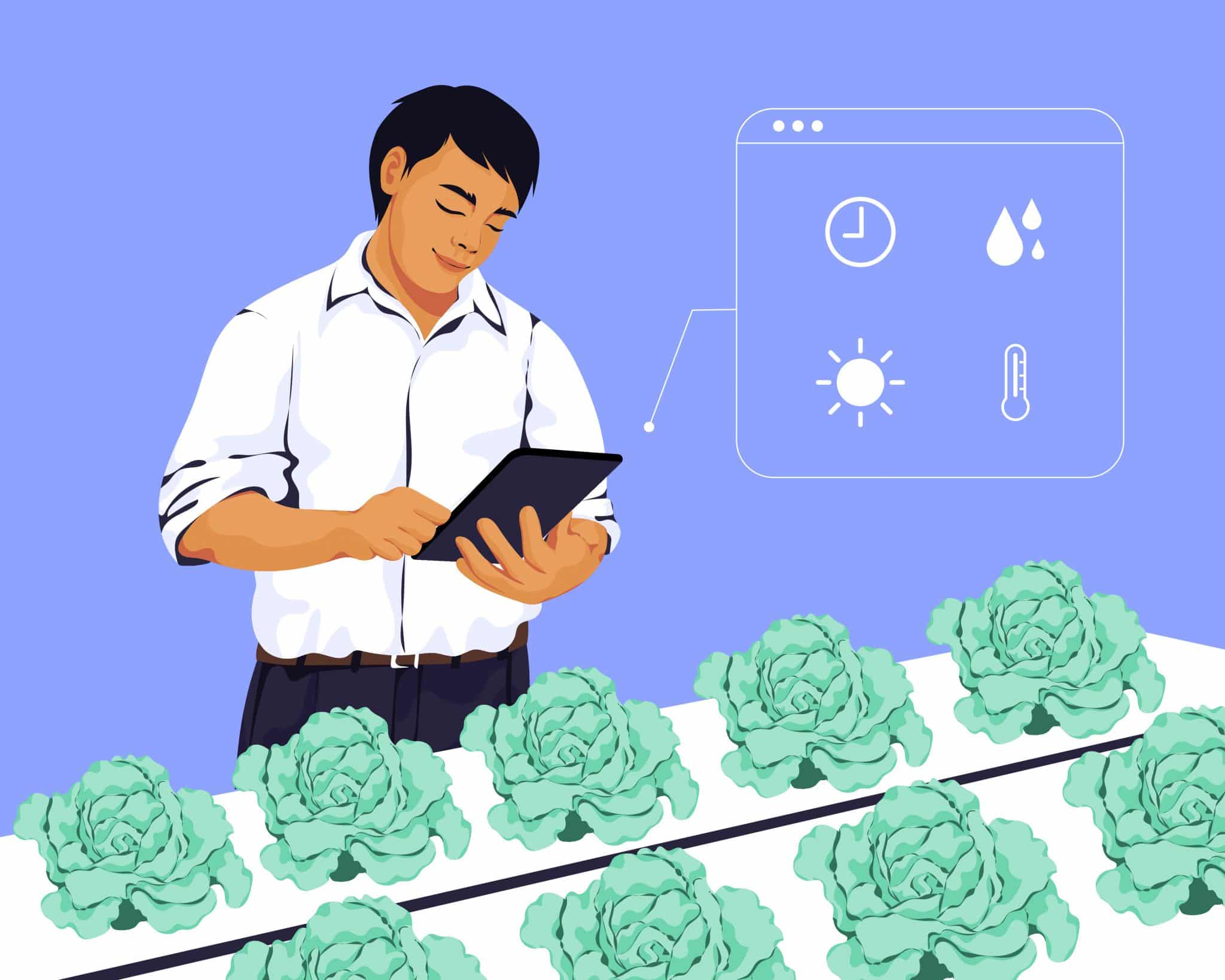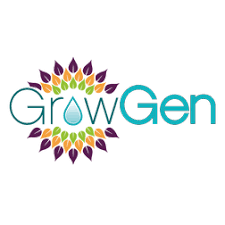Light is one of the most essential factors in growing plants. This is especially true for hydroponic gardening. The right kind of light will help your plants grow strong and healthy, while the wrong kind of light can cause them to weaken and become sickly. But with so many different types of hydroponic grow lights on the market, it can be tough to decide which is right for your setup. This hydroponic lighting guide will help you navigate the world of hydroponic lights and determine which type of grow light is best for your garden.
Why You Need Hydroponic Lighting
Light is a vital element for plant growth. In fact, plants can only grow and produce food through photosynthesis, which uses artificial or natural sunlight to convert water and carbon dioxide into the things plants need to survive: oxygen and glucose.
While all plants need light to grow, not all plants require the same amount or type of light. For example, tomatoes and pepper plants are high-intensity-light plants, which means they need a lot of light to produce fruit. On the other hand, lettuce and spinach are low-intensity-light plants, which means they can grow with less light.
No matter what type of plant you’re growing, you’ll need to provide artificial light if you want to grow them indoors. That’s where hydroponic grow lights come in.
Hydroponic Grow Lights and How They Work
Hydroponic grow lights are designed to mimic the natural light that plants need for photosynthesis. This means they provide a light source with the right mix of light wavelengths and intensities that plants need to grow. This includes day length, light color, and light intensity. Both daytime and nighttime cycles are considered when designing hydroponic grow lights and are equally crucial for plants.
However, before we dive into the specifics of hydroponic grow lights, it’s important to understand how light affects plant growth.
The Different Wavelengths of Light and How They Affect Plants
Light contains different wavelengths. These wavelengths determine the color of the light and the energy level. For example, blue light has a shorter wavelength than red light, which means it has more energy. The shorter the wavelength, the higher the energy. The longer the wavelength, the lower the energy.
When it comes to plant growth, different colors of light have different effects. For example, blue light is typically used for vegetative growth, while red light is used for flowering and fruiting.
However, it’s important to note that plants don’t just use one wavelength of light. Instead, they use a mix of all the different colors of light in the visible spectrum. This is why hydroponic grow lights are designed to mimic the sunlight that plants need for optimal growth.
Photosynthetically Active Radiation
Although a lux meter may provide you with some guidance on light intensity, lux meters miss out on important information. While lux is only concerned with the amount of light humans can see (lumens), plants also take in light beyond this range. This is called Photosynthetically Active Radiation (PAR).
This is where PAR meters come in handy. PAR meters measure the amount of PAR light, which is the light that’s used for photosynthesis. This is the light in the visible spectrum’s 400 to 700 nanometer range.
Now that we’ve covered the basics of light and how it affects plant growth, let’s look at the different components of hydroponic grow lights.
How Light is Measured
Light intensity is how much light is reaching a surface. The most common unit of measurement for light intensity is lux (lx). One lux is equivalent to the amount of light cast from a candle on a squared meter surface one meter away. It is one lumen of light per square meter.
For plants, the ideal light intensity depends on the type of plant you’re growing and its growth stage.
For example, hydronic vegetables like lettuce prefer light with an even wavelength of 400 to 700 micromoles of intensity. While other plants, like tomatoes, prefer a full spectrum light with heavy on red and 800-900 micromoles of intensity.
You can easily measure the intensity of light with a lux meter. Most lux meters have a sensor that measures the amount of light in a specific area and then displays the results in lux (lx).
Grow Light Components
Hydroponic grow lights consist of three main parts:
- Ballast – The grow light ballast is the component that regulates the voltage and current going to the light bulb.
- Reflector – The reflector is responsible for gathering as much light as possible and reflecting it onto the plants.
- Lamp – The lamp (commonly but erroneously called a “bulb”) is where all the action happens. This is the part of the grow light that produces the different wavelengths of light that plants need for photosynthesis.
- Timer – The timer is an optional component that can be used to automate the grow light cycle.
Now that we’ve covered the basics of hydroponic grow lights, let’s look at some of the different types of grow lights available on the market.
Types of Hydroponic Lights
There are several different types of hydroponic lights available on the market, each with its own set of advantages and disadvantages. Therefore, the hydroponic light you choose will ultimately depend on your specific grow operation.
HID Lights
High-intensity discharge (HID) lights are some of the most popular grow lights on the market. An HID lamp is composed of an arc tube filled with gas and metal halides. When electricity is passed through the arc tube, it produces intense light. Commercial growers often use them because they’re very efficient and produce a lot of light.
HID lights come in three different varieties: metal halide (MH), Ceramic Metal Halide (CMH), and high-pressure sodium (HPS). MH lights emit a blue light spectrum ideal for vegetative growth, while HPS lights emit a red light spectrum ideal for flowering plants. CMH and MH lamps can be used for both vegetative growth and flowering, while an HPS light should only be used during the flowering stage.
Most HID lights require a ballast to regulate the voltage and current going to the lamp. HID lights also produce a lot of heat, so they need to be used in conjunction with a cooling system, like an air-cooled reflector or inline fan.
Fluorescent Grow Lights
Fluorescent lights are another popular type of grow light, especially among home growers. They’re very energy-efficient and emit very little heat, making them ideal for small grow operations. Fluorescent light is best for vegetative growth and can be used with an HID grow light for flowering.
Fluorescent lights come in two varieties: compact fluorescent lights (CFLs) and T5 fluorescent lights. CFLs are smaller and don’t produce as much light. Moreover, T5 fluorescent lights are often used in commercial grow operations because they’re very efficient and produce a lot of light.
Light Emitting Diode (LED) Lights
LED grow lighting is becoming a gold standard in the grow light industry because of its many advantages. For example, LEDs are long-lasting, very energy-efficient, and emit very little heat. An LED fixture can last up to 50,000 hours, which is much longer than an HID or fluorescent lamp.
One of the biggest advantages of an LED light is that it can be tuned to specific wavelengths of light. This means you can get a LED grow light that emits specific wavelengths of light your plants need for optimal growth. LED grow lights can be customized to your specific grow operation, from red/blue to full-spectrum light.
How to Choose the Right Hydro Grow Light for Your Needs
Now that you know the basics of hydroponic grow lights, it’s time to choose the right hydro grow light for your needs. Here are a few factors to consider when making your decision:
- The size of your grow operation – The size of your grow operation will dictate the type and number of hydroponic lights you need. A small grow operation will only need a few fluorescent or LED lights, while a large commercial operation will need several HID lights.
- The type of plants you’re growing – The variety of plants you’re growing will dictate the optimal light. For example, plants grown for their flowers will need a light spectrum rich in red wavelengths.
- Your budget – Your budget will dictate the type and number of hydroponic lights you can afford. HID lights are less expensive than fluorescent or LED lights, but they’re also less efficient.
However, choosing the right hydroponic lighting system is more than just a matter of picking the right type of light. There are several other factors to consider, including the intensity of the light, the duration of the light cycle, and the distance between the light and the plants. Moreover, it’s essential to research your specific hydroponic plants to ensure you’re providing them with the right growing conditions.
The bottom line is that there’s no one-size-fits-all answer when choosing the right hydroponic grow light for your needs. Ultimately, the decision will come down to combining personal preferences and growing operation requirements.
Hydroponic Lighting Tips and Tricks
Here are a few general tips and tricks to keep in mind when setting up your hydroponic lighting system:
- Make sure to install a timer so that your lights turn on and off at the same time each day. This will help your plants grow more evenly.
- Adjust light intensity according to growth stage. The intensity of the light should increase during the vegetative stage and then peaks during the flowering stage. This simulates the changing of the seasons and helps your plants produce more flowers.
- Keep your grow lights at the correct distance from your plants. If they’re too close, they can burn the leaves; if they are too far, you waste energy, and your plants won’t photosynthesize properly.
- It’s a good idea to install reflective material on the walls and ceiling of your grow room or paint them white. This will help reflect light onto the plants and increase the efficiency of your lighting system.
- Finally, don’t forget that you’ll need to change your hydroponic lamps every few years. Just like any other type of lamp, hydroponic grow lamps will eventually burn out and need to be replaced. LED’s on the other hand, last for many years.
Keep these hydroponic lighting guide tips and tricks in mind as you begin to plan your grow room. With the right hydroponic lighting system, you can grow healthy plants that produce bountiful harvests.
Hydroponic Lighting Guide FAQs
How much light do indoor plants need?
How often should I replace my grow lights?
Are LED lights better than HID lights?
How do I know if my plants are getting enough light?
Hydroponic Gardening Equipment & Supplies
All in all, it’s clear to see that grow lights are a vital part of any hydroponic garden. With the right hydroponic lighting system, you can give your plants the light they need to grow healthy and strong.







